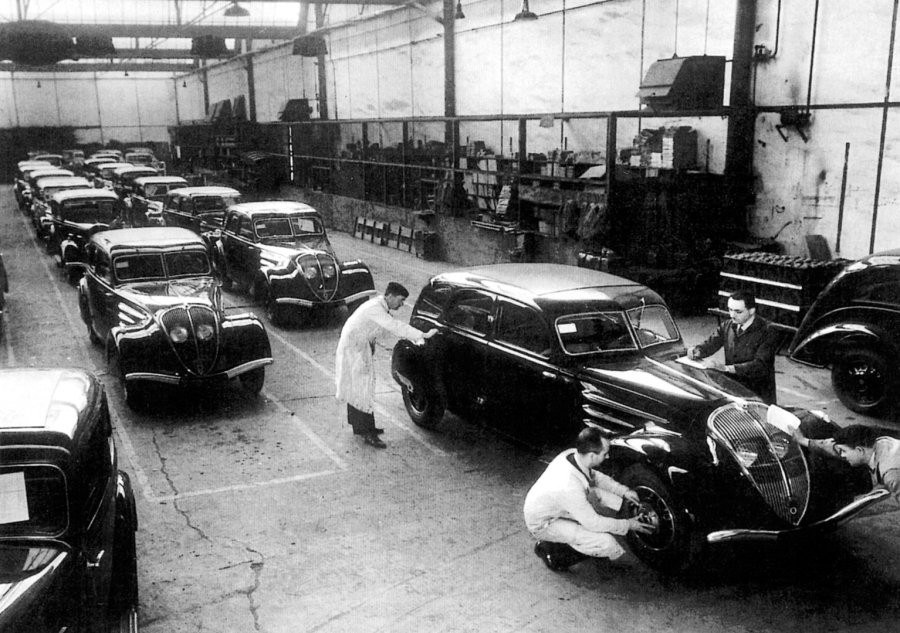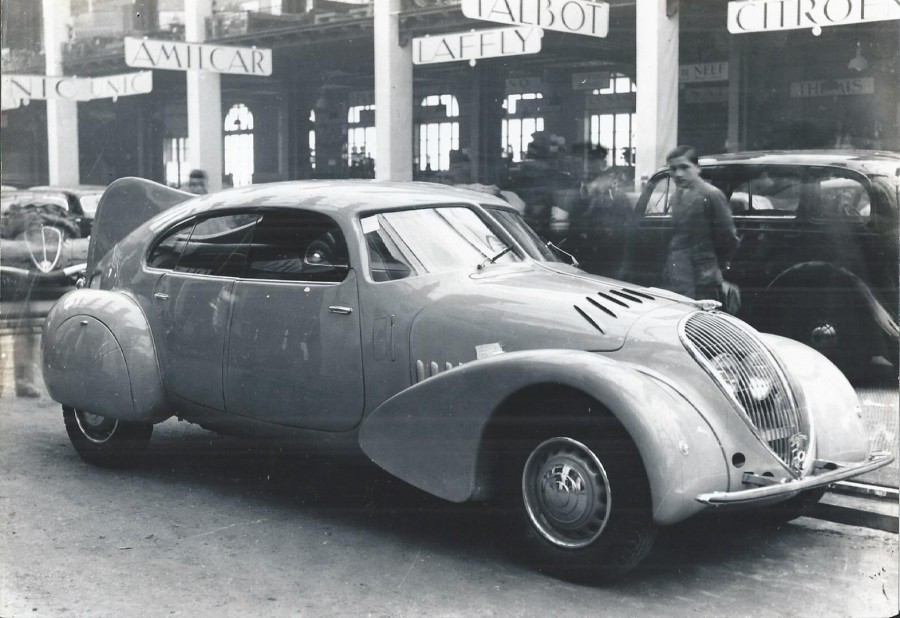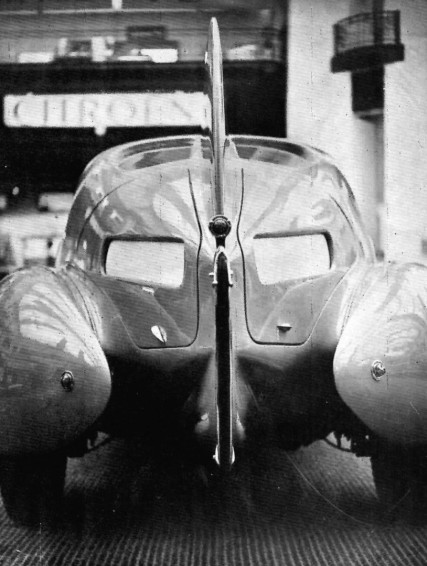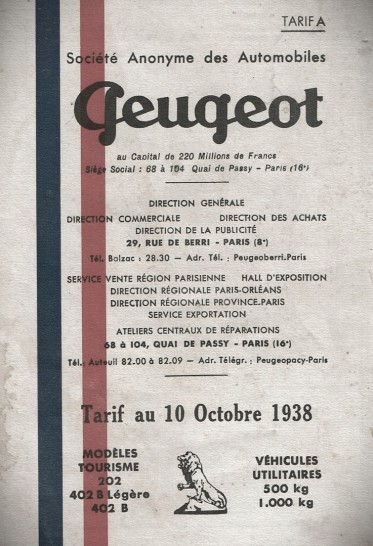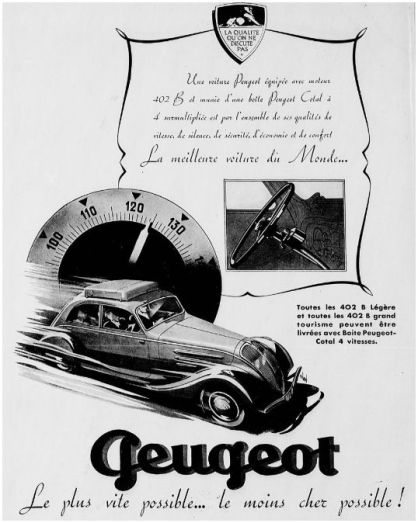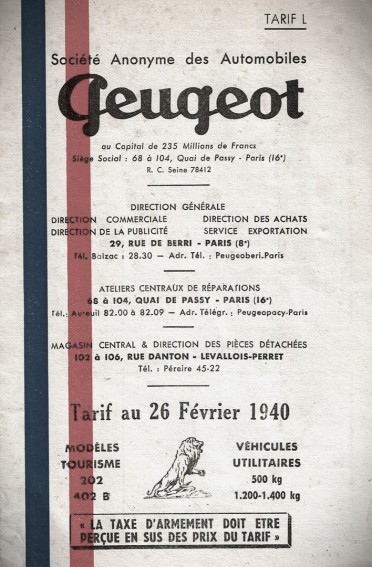

90 years of 402 - from 1935 to 2025 „Fuseau de Sochaux“!
The 402 was introduced to the general public on October 3, 1935, at the Paris Motor Show as the successor to the 401 and received widespread attention.
The revolutionary feature was the running-board-free streamlined body with the arrangement of the headlights behind the radiator grille and the fully covered rear wheels for aerodynamic reasons.
Due to its avant-garde design, the Peugeot 402 was also called "Ligne Fuseau Sochaux," which can be translated as "Spindle Shape from Sochaux."
However, the PEUGEOT plant in Sochaux did not only produce a visually modern car; the 402 also brought a range of technical innovations: all-steel body, suspension supported by oil shock absorbers, a 12-volt electrical system, safety pin locks, and retractable door handles.
The following options were available:
In 1935, six different body styles were available, and orders were very successful for PEUGEOT.
The convertible with a folding roof was also called "Eclipse"- together with the Peugeot 401, they were the first production vehicles with an electrically retractable sheet steel roof in the trunk.
The 402 Eclipse was a luxury vehicle, and production was only done on order. By the end of the construction period, fewer than 500 "Eclipse" had been produced.
In the fall of 1936, the Peugeot "Andreau-N8X" with an 8-cylinder engine was presented at the Paris Motor Show under the slogan "The car of 1940".
The French engineer Jean Edouard Andreau developed an aerodynamically optimized prototype for PEUGEOT.
Thanks to its body with a rear wing, developed in a wind tunnel, the vehicle achieved an impressive drag coefficient (cW) of only 0.38 (the series sedan had a value of 0.68).
In France, a better cW value was not achieved until 1955 - 0.36 by the Citroen DS.
There is evidence that at least 2 further examples (N4X) with a 4-cylinder engine were produced for research purposes. Some sources indicate higher numbers.
Thanks to the favorable drag coefficient, the Andreau N4X, with an unchanged standard engine, reached a top speed of 150 km/h and at the same time reduced fuel consumption by 30 percent.
The Second World War put an end to all visions of the "Andreau" model and also to the series development of an 8-cylinder engine.
Also, in 1936, PEUGEOT introduced the 302, a smaller version with a narrower body, no third side window, and a 1.7-liter engine with 43 hp (31 kW).
Meanwhile, the body and equipment variants of the 402 were constantly being expanded.
TARIF 1936
|
Designation |
Seats |
Type |
Price/F |
|
Limousine Luxe |
6 |
N4 |
23.900 |
|
Limousine Grand Luxe |
6 |
N4Y |
25.250 |
|
Limousine Familiale |
7/8 |
F4 |
27.000 |
|
Cabriolet |
4/5 |
D4 |
30.900 |
|
Cabriolet-Transformable electirc |
2/3 |
E4 |
34.900 |
|
Cabriolet-Transformable electirc |
5/6 |
E4Y |
32.500 |
|
Coach |
4/5 |
W4 |
29.900 |
|
Roadster |
2/3 |
R4 |
27.900 |
|
Commerciale |
|
C4 |
23.500 |
|
Taxi |
6 |
T4 |
30.000 |
|
302 Limousine |
5 |
N3 |
19.500 |
|
302 Limousine Luxe |
5 |
N3Y |
20.500 |
|
302 Cabriolet
|
2/3 |
D3 |
24.500 |
TARIF 1937
|
Designation
|
Seats |
Type |
Price/F |
|
Limousine Luxe |
6 |
N4 |
26.900 |
|
Limousine Grand Luxe |
6 |
N4Y |
28.250 |
|
Limousine Familiale |
7/8 |
F4T |
30.900 |
|
Coach Décapotable |
5 |
D3Y |
30.900 |
|
Cabriolet-Transformable |
5/6 |
E4T |
41.500 |
|
Coach |
4/5 |
W3 |
30.900 |
|
Roadster |
2/3 |
R4 |
34.300 |
|
Commerciale |
|
O4Y |
28.500 |
|
302 Limousine |
5 |
N3W |
21.800 |
|
302 Limousine Luxe |
5 |
N3R |
22.900 |
|
302 Cabriolet
|
2/3 |
D3 |
28.500 |
For the 24 Hours of Le Mans in 1937, Émile Darl’mat, with PEUGEOT's permission, constructed three racing cars based on the Peugeot 302 chassis with a 1,991 ccm engine from the 402.
The three racing cars were traveling at speeds of up to 170 km/h and finished 7th, 8th and 10th overall!
In 1938, the drivers Cortanze & Contet even secured 1st place in the 2-liter class and 5th place overall. Unfortunately, two other Darl’mat vehicles dropped out that year.
TARIF 1938
|
Designation |
Seats |
Type |
Price/F |
|
Limousine Luxe |
6 |
N5 |
28.900 |
|
Limousine Grand Luxe |
6 |
N5T |
31.950 |
|
Limousine Luxe Tourismus with Cotal |
6 |
N5TC |
34.800 |
|
Limousine Grand Tourismus with Cotal |
6 |
N5TM |
35.200 |
|
Limousine Familiale |
7/8 |
F5 |
33.200 |
|
Coach Décapotable |
5 |
D5 |
38.500 |
|
Cabriolet-Transformable |
5/6 |
E5T |
46.500 |
|
Coach Grand Luxe |
4/5 |
W5 |
37.500 |
|
Roadster |
2/3 |
R4 |
34.300 |
|
Commerciale |
6 |
C5 |
30.500 |
|
|
|
|
|
|
|
|
|
|
|
|
|
|
|
TARIF 1939
|
Designation |
Seats |
Type |
Price/F |
|
Limousine Luxe |
6 |
N5 |
28.800 |
|
Limousine Grand Tourisme |
6 |
N5T |
31.900 |
|
Limousine Grand Tourisme, Cotal |
6 |
N5TC |
35.300 |
|
Limousine Grand Tourisme, Cotal |
6 |
N5TM |
35.300 |
|
Limousine Familiale Grand Luxe |
7/8 |
F5T |
33.500 |
|
Limousine Familiale Grand Luxe, Cotal |
7/8 |
F5TC |
36.900 |
|
Coach Grand Luxe |
5 |
W5 |
38.200 |
|
Coach Décapotable |
5 |
D5 |
38.800 |
|
Commerciale |
|
C5 |
30.750 |
|
|
|
|
|
|
402 B Légère |
|
|
|
|
Berline Sport |
4 |
N5O |
27.600 |
|
Berline Sport, Cotal |
4 |
N5OM |
31.000 |
Later, the 402B Légère appeared on the 302 chassis with a significantly modified body, a one-piece windshield, and a reduced passenger compartment derived from the Peugeot 202.
In its last version in 1939 the Peugeot 402B Légère (N5S) reached a top speed of 140 km/h by reducing its weight to 1068 kg.
In 1938/39, PEUGEOT experimented with 2.3-liter diesel engines (HL50) in the 402.
Februar 2025
Andreas Gemünd
see more:
Disclaimer: Despite careful control of the content, I assume no liability for the content of external links.
The operators of the linked pages are solely responsible for their content.





